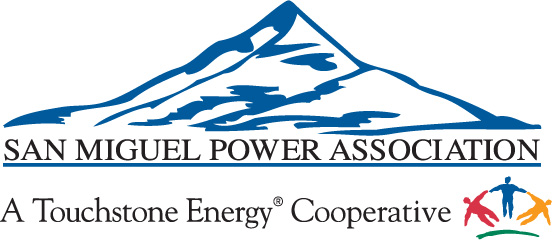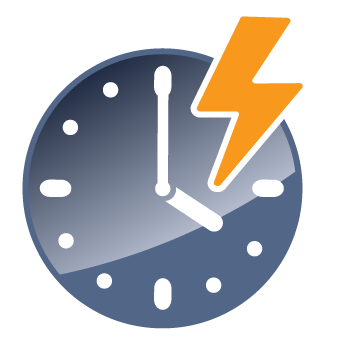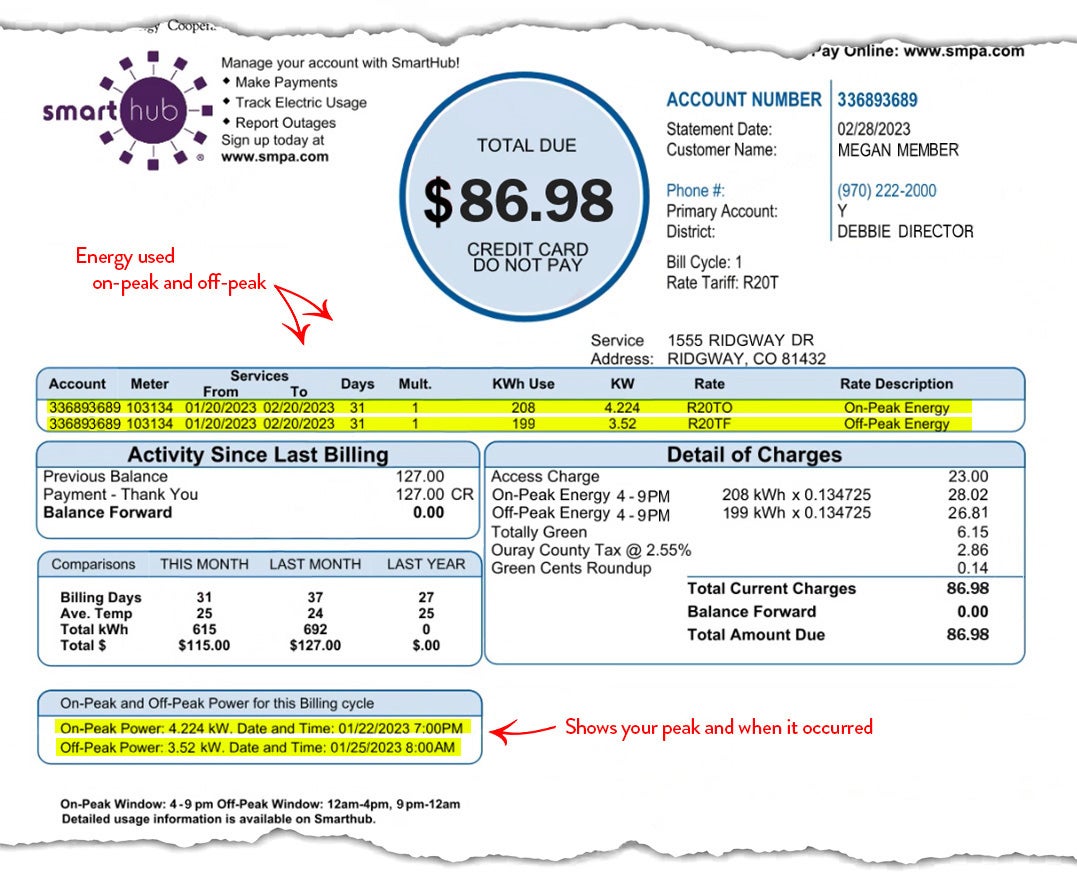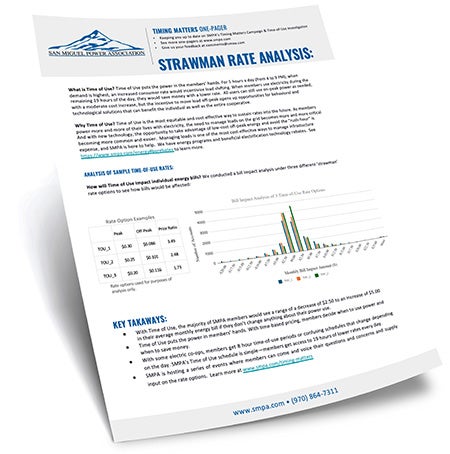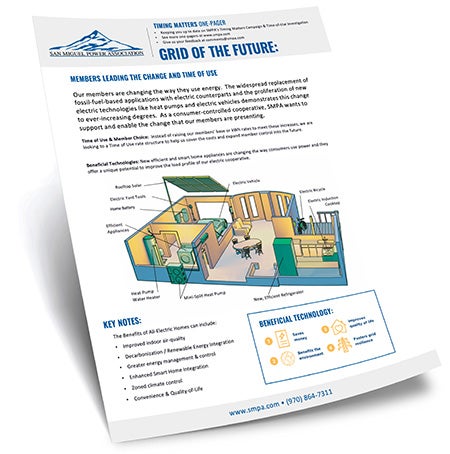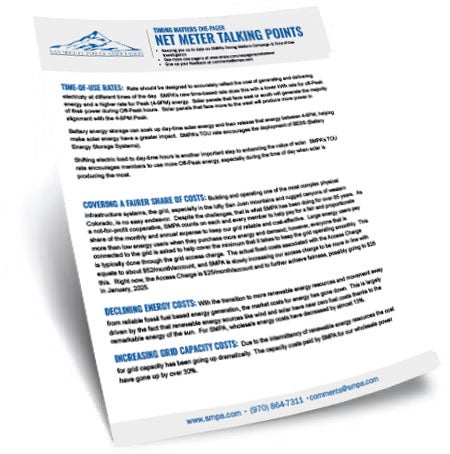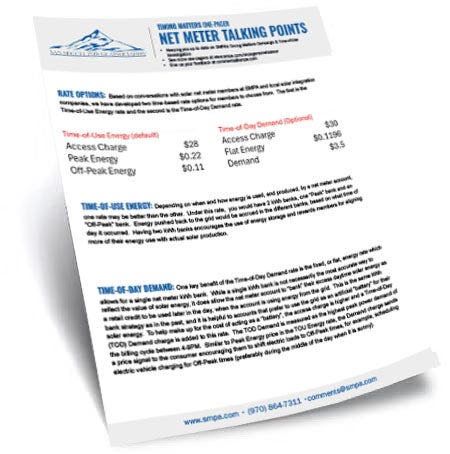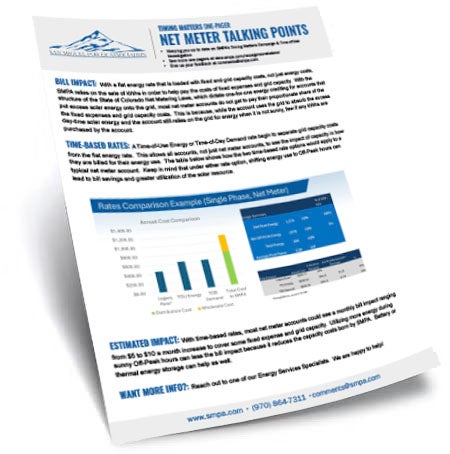Timing Matters
How Can Time-of-Use Enhance Member Choice, Lower Rate Pressure and Foster a More Effective Grid?
 THE COST TO DELIVER ENERGY IS RISING
THE COST TO DELIVER ENERGY IS RISING
The cost of generating power at the source is rising—fast. In fact, our wholesale energy rates have increased almost 30% since 2022.
Peak demand is one of the biggest cost pressures impacting electricity rates. By strategically managing flexible loads, utilities can lessen the overall cost impact on the electricity used for essential purposes like cooking, lighting, and heating, when consumers need it most.
HOW CAN CONSUMER CHOICES LOWER RATE PRESSURE?
SMPA purchases power from wholesale power supplier, Tri-State Generation and Transmission, (Tri-State).
To serve consumer needs, both Tri-State and SMPA need to have enough infrastructure to power SMPA members as if every single light, fridge, freezer, TV, ski lift, and snow machine is turned on at the same time.
When we have very high demand--like from 4 PM to 9 PM in the evening, much of this infrastructure is in use (especially when it is cold outside) but, when we have very low demand, we need much less of it. Regardless, the power infrastructure still needs to be available to turn on at a moment’s notice. That means we need to pay Tri-State to keep the infrastructure up and running.
That’s where the opportunity lies.
If our peak demand was not so high, we wouldn’t need to waste money keeping up so much infrastructure. If we could reduce the peak, we could lower the pressure on rates.
But how?
HOW DO WE REDUCE THE PEAK?
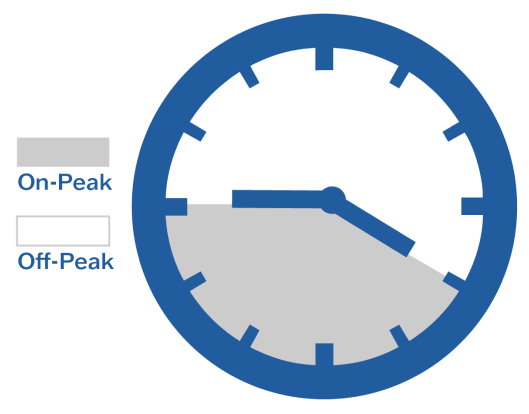 As a set of communities, we can help mitigate the growing cost of energy with just a few small changes. When you use the bulk of your energy during the 19 hours of off-peak time, you help make it more viable for SMPA to keep rates lower into the future. But, without a price signal, few will be motivated to move any more of their electrical load away from the peak.
As a set of communities, we can help mitigate the growing cost of energy with just a few small changes. When you use the bulk of your energy during the 19 hours of off-peak time, you help make it more viable for SMPA to keep rates lower into the future. But, without a price signal, few will be motivated to move any more of their electrical load away from the peak.
For this reason, SMPA will implement a time-based rate structure, beginning in May of 2025. Under this new structure, a Time-of-Use rate will offer members a discount on energy for 19 hours of the day, 11¢ / kWh instead of 13.5¢ / kWh. During the 5 hour “Peak” period of 4 PM to 9 PM, members will see a higher rate (22¢ /kWh). The Off-Peak/On-Peak combination will have minimal impact on the overall cost for most members, and it will better reflect the actual cost of energy throughout the day.
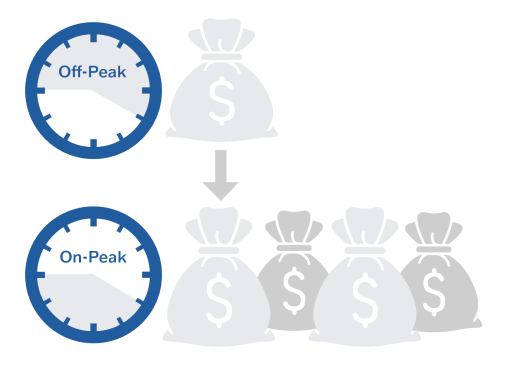 Within the new time-based rate structure, members are incentivized to shift their electricity usage to off-peak hours, when demand and wholesale energy costs are lower. Managing flexible loads like EV charging, water heating, and electric heat tape can save room for essential electricity uses on the grid. The new time-based rate also includes a Time-of-Day “peak power” rate option to give flexibility to members whose energy use profile positions them to take advantage of it.
Within the new time-based rate structure, members are incentivized to shift their electricity usage to off-peak hours, when demand and wholesale energy costs are lower. Managing flexible loads like EV charging, water heating, and electric heat tape can save room for essential electricity uses on the grid. The new time-based rate also includes a Time-of-Day “peak power” rate option to give flexibility to members whose energy use profile positions them to take advantage of it.
These changes will be beneficial to SMPA members because they have the potential to lower capacity costs, reducing upward pressure on the end-consumer rates. It can also provide an opportunity for members to save money by shifting discretionary loads like laundry, dishwashing, EV charging, snow-melt systems, or water heating to the off-peak period. This shift would also bolster the market for solar energy plus storage, aiding the transition to a cleaner energy system.
WHAT'S NEXT?
We encourage you to take a look at your usage habits each month when your SMPA bill arrives. What percentage of your usage is during peak hours?
There are multiple ways to move your usage of electricity away from peak hours. The following are just a few ways to move your usage to off-peak hours:
- Use the “Time Delay” feature on your dishwasher
- Do laundry during off-peak times. (9pm – 4pm the next day)
- Install a timer on your electric water heater or heat pump water heater to keep it from making hot water during peak times. (You’ll still have a tank full of hot water to use during the peak times)
- Install Smart Thermostats
- Charge your EV during off-peak times
- Program home batteries (if available) to dispatch during peak times.
- Charge outdoor power equipment batteries during off-peak hours.
- Install ETS (Electric Thermal Storage) systems to avoid buying electricity to heat your home with during peak times. (While still maintaining home temperature via the stored heat)
Many of these products are eligible for SMPA rebates as well!! Check 'em out!
